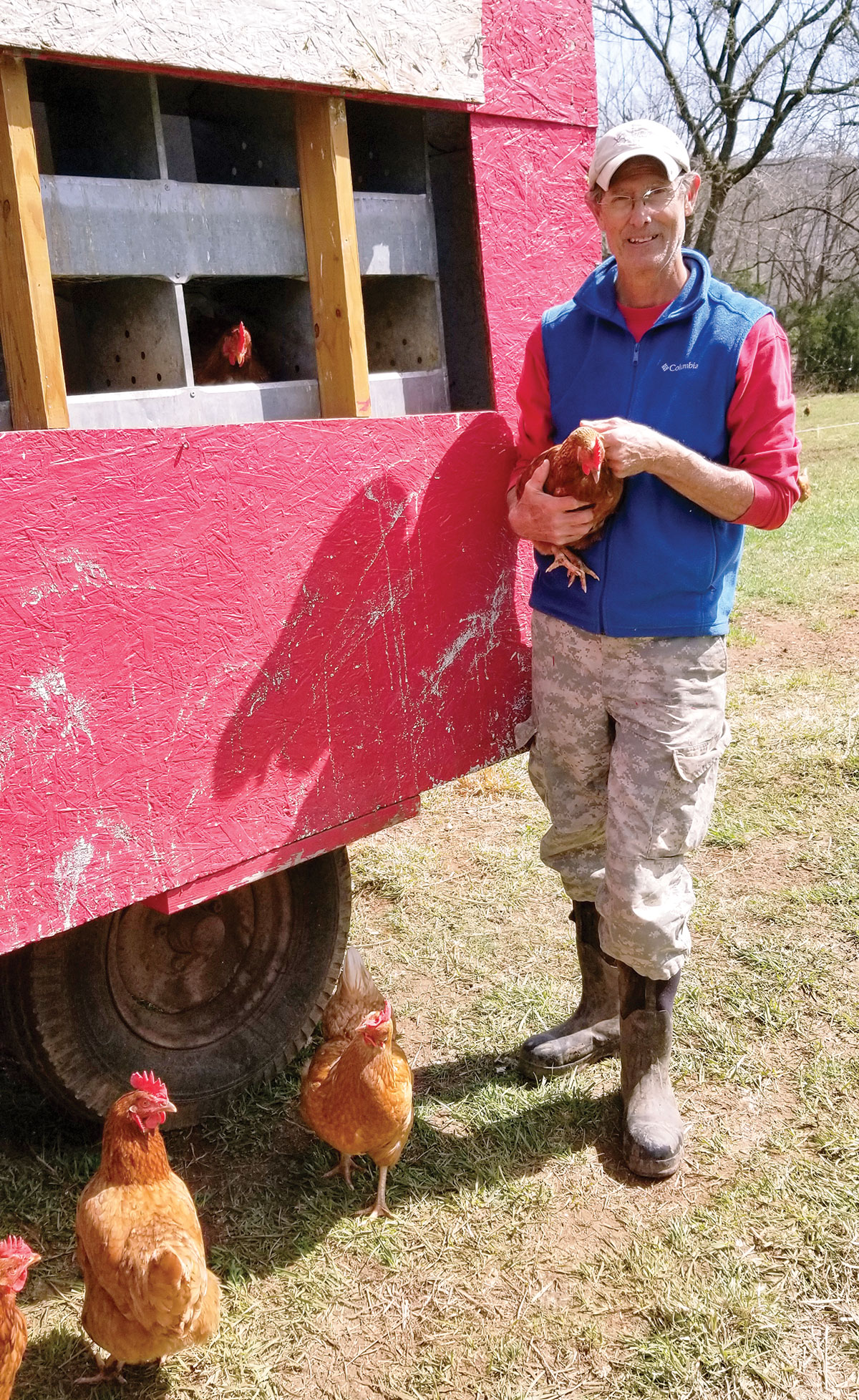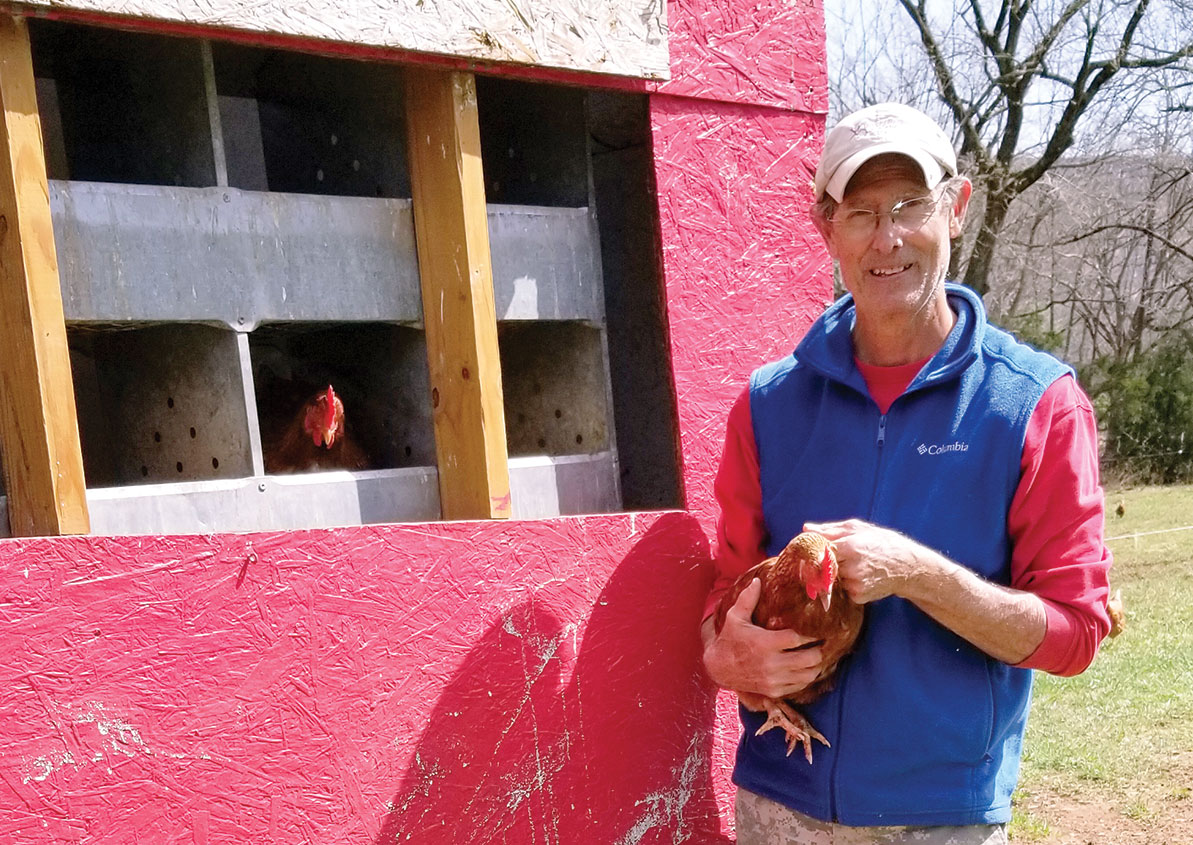 ClemTuck Farms utilizes a natural approach
ClemTuck Farms utilizes a natural approach
Gary Tucker and Sue Clemons like to do things the natural way while also running an efficient poultry farm.
“We’re a small-batch pasture-based organic practice meat and egg direct-to-consumer farm,” Gary said.
ClemTuck Farms located west of West Fork, Ark., went from growing 50 broilers when they began in 2017 to 1,250 birds expected this year. They keep 50 egg layers and have even ventured into raising grass-fed beef. They are members of the American Pastured Poultry Producers Association and use only organic feeds. They also use USDA-inspected and animal welfare-approved processors.
The chicken brooding operation involves feeding and caring for the 250 birds inside for a few weeks before moving them outside.
“They don’t free range,” Gary said. “Each batch has a 10-by-12-foot shelter and that is moved daily.”
They eat grass and bugs, as well as any other critters they might find, but the bulk of their diet is organic feed.
The 40 egg layers live inside the “eggmobile.” Their quarters and the mobile guard doghouse move weekly. Dealing with predators is one of the issues that has plagued the layers, which range more freely than the broilers, but Gary and Sue raise Great Pyrenese guard dogs to bond with chickens so they will protect them. They sleep and eat by the chickens.
Another issue with chickens is dealing with coccidiosis, an intestinal bug. As he prepares the broilers for moving outside, Gary tries to strengthen their guts with active yogurt cultures.
Gary and Sue did not grow up on farms. Gary, originally from Little Rock, and Sue, a native of Chicago, met via the VISTA program and worked together at Arkansas Consumer Research in Little Rock. After they married, they lived on a “small semi-farm,” Gary said, just outside of Little Rock.
They moved to Fayetteville, Ark., where they lived and worked in town. They soon realized they wanted to get back the countryside and the idea for traditional farming of livestock came after they started eating it.
Sue ordered pork from Heritage Meats, an organization that provides a market for farmers growing heritage chickens, pigs and cattle in a traditional manner.
When they ate the pork, which was from a Red Wattle pig, Gary said they were amazed at the taste. It made them want to try beef raised in a traditional manner. Sue found some grass-fed/finished beef in West Virginia and ordered it. They had a similar taste experience with the beef.
“From there, it was kind of like if we appreciate that, maybe we can grow some of this for others who may have the same appreciation for traditionally-raised animals. We kind of then went on about a year’s search for a farm,” Gary said.
They also visited the beef farm in West Virginia and educated themselves about this type of farming. They also visited Joel Salatin’s Polyface Farm in Virginia.
“He’s probably one of the most influential farmers for those looking to do traditional farming for profit,” Gary said.
Having developed some skills needed to operate a pasture-raised livestock farm, Gary and Sue eventually settled on their location near West Fork.
They started with chickens because of the fast turnaround. One of their first setbacks was a fire in the horse stall they used to brood chicks. A rodent had chewed through wire.
“The benefit was that we got to relocate and redesign a brooder house from scratch,” Gary said.
Gary and Sue have expanded to beef, but are just starting to build a herd, which is made up of Red and South Poll cattle as well as a Red Angus mix.
The couple started out with 12 cows they bought last year from Ozark Pasture Beef.
There were six calves born last year and the farm is hoping to build the herd to 35 to 40 momma cows. It takes a minimum of two years to finish a calf when the diet is solely grass. Gary moves cows daily and allows ample recovery time for grazed pastures.
Whether it is cows or chickens, the ClemTuck Farm is about natural concepts and the care of the animals.
“We’re traditional. We’re trying to raise animals the way our grandparents would have raised animals. We want to provide the dignity, care and respect that another life ought to have,” Gary said.
Sales of eggs and poultry meat are made through word-of-mouth and the website, clemtuck.com.
If he counts his labor, Gary said, the farm is “a breakeven operation. If my time is free, then we’ve got a good profit margin.” On a more serious note, he said, “We’re close to a 1 percent, 2 percent profit margin. We’re still learning. We’re still trying to get efficiencies, economies of scale.”
He said he would like to get to at least a 5 percent margin.
“It would be delightful to have it be a true for-profit entity. It’s like any new business. You spend those first years trying to gut it out and get to that point where you’re making money.”
The payoff now often comes in quiet or amusing moments on the farm.
“The layers are a hoot. They’ll come running out to greet me,” Gary said.
Aside from those benefits, he said, “We like that we can provide high-quality, nutritional meat and eggs for other people who can’t do it themselves. That’s rewarding to us.”







